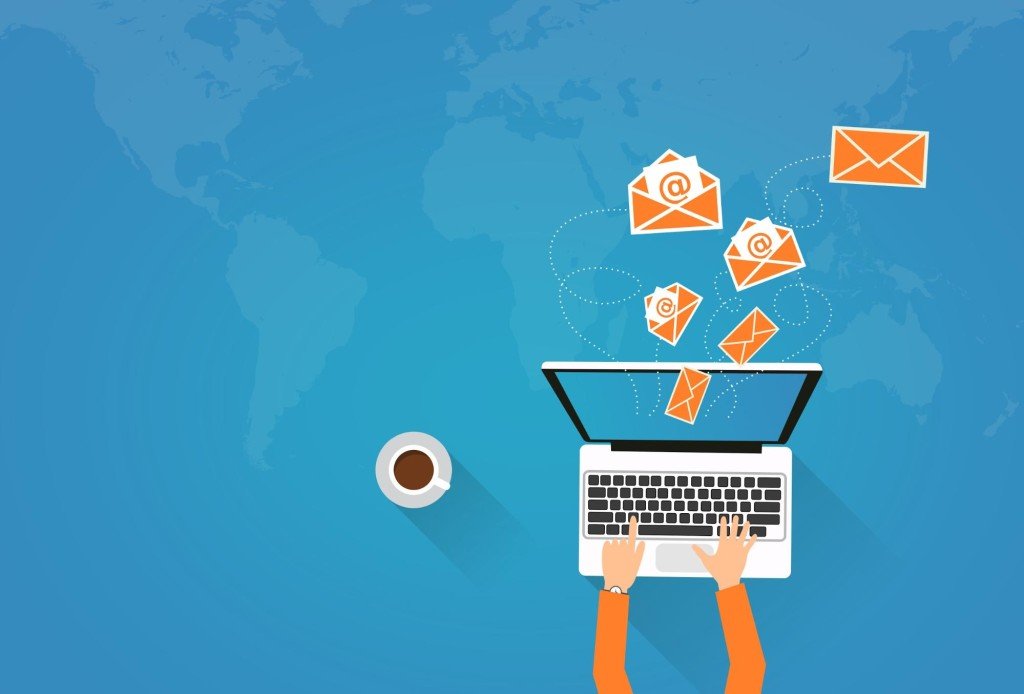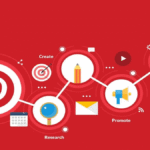For companies of all sizes, email marketing provides a high ROI. You can sell more goods and services by increasing conversions with a strong approach, but only if you can get subscribers to open and click on them. Important indicators that marketers use to assess their email marketing initiatives are open and clickthrough rates. Improving these indicators is intended to boost website traffic and revenue. Regretfully, a lot of businesses are unaware of how to optimize your email campaigns to boost open rates and guarantee that their subscribers see them.
Although it can appear simple, creating an email that performs effectively is much more difficult than you would imagine. To boost conversions, you need to think about every element of the email, from the subject line to the text, even with the best tools. Additionally, optimizing your email marketing calls for you to reassess your efforts and look for fresh approaches to raise your KPIs.
Ways To Optimize Email Campaigns

1. Select An Identifiable Sender Name
If you want to know how to optimize your email campaigns, you should always choose a sender name that will inspire confidence in your subscribers and make them feel more at ease reading emails since many individuals will only accept emails from people they know.
You should always use the company name as the sender unless the person sending the email knows the customers personally and subscribers would be able to identify their name in their inboxes. To establish confidence and give the email a more intimate feel, you may also mention the sender’s first name and company name.
Sending emails from a familiar name is important, but so is using the same sender name for all of your marketing initiatives. Subscribers may not identify your emails if you alter the sender name, which will decrease their likelihood of opening them.
2. Create A Compelling Subject Line
When deciding whether to open an email, the majority of subscribers look at the subject line. They will probably ignore it as they go through the rest of their emails if it isn’t attention-grabbing and catchy. Furthermore, just because someone reads your subject line doesn’t mean they’ll click through to the email.
Your subject line serves as both your first impression and your only chance to persuade recipients to open the email. Naturally, however, it should also outline what they may anticipate seeing when they open the email.
Consider offering a discount on a well-liked product, for instance. If so, you should mention the product name, the amount of the discount, and if it’s a limited-time offer in the subject line so that subscribers may decide whether to open or disregard the email.
You should ascertain if the subject line of your emails and the information they include are relevant to your audience to optimize them. Generally speaking, they ought to address your intended audience. For instance, you wouldn’t want to send an email about cat toys to a dog owner who isn’t interested in what you have to offer if you are a pet firm that sells to both dog and cat owners.
3. Customize The Content Of Emails
You should tailor the content of your emails if you really want to increase the success of your email marketing campaigns with email optimization tips. Email marketing automation and CRM platforms that let you add subscribers’ names and other crucial data make this simple.
By making your emails more relevant to your target audience, personalization enables you to communicate with each consumer separately without having to develop unique campaigns for each member of your subscriber list.
By addressing the recipient by their first name and using behavioral data you know about them, including their location, the pages they have browsed on your website, and their recent purchases, you may personalize email messages to maximize their effectiveness. For example, if a subscriber has bought a shirt from your e-commerce website, you may send them an email suggesting other items that are comparable.
4. Compose Interesting Emails
Your body content, which appears when recipients open your email, has the power to persuade them to act. Writing captivating emails that compel readers to click on links or call-to-action (CTAs) should thus be a part of your email marketing plan.
You should be able to create interesting and relevant emails for your target audience. To maintain consistency and foster subscriber trust, your email marketing campaigns should have the same personality and tone as the rest of your marketing initiatives and website.
Additionally, using the client information you’ve gathered from your website, your text should target certain audience groups. Write text that piques readers’ interest and utilize the same branding components you use in other aspects of your marketing to maximize your email marketing.
5. Consider Mobile While Designing
An effective email design should be responsive and just as important as the text you use. If you want to know how to optimize your email campaigns, make sure your campaigns are mobile-friendly and will display well on a variety of screens, devices, and applications. This is because many people read their emails on their phones rather than on computers.
Always check both desktop and mobile versions of your emails while you’re creating them. Before launching your campaign, think about sending test emails to people you know who use various email providers, screen sizes, and devices to check how they look across a range of devices. Email marketing software may also be used to see how your campaigns will appear on different devices.
6. Make Use Of Rich Text And Images
When developing your campaigns, you may use a variety of email formats, including rich text. Links and bullet points may be included in rich text emails. Since HTML is widely supported by most applications and programs and is often converted from rich text emails by email providers, it’s perfect for situations when you’re not sure what kind of document your subscribers can see and read.
Additionally, unless you want your emails to seem like letters and be more intimate, you should always utilize images in your email marketing. Salespeople could, for instance, send emails devoid of images if they aren’t essential to getting their point across. In the meantime, you should always employ pictures to show people what to anticipate when advertising any product or item that needs a visual.
7. Include Links That May Be Shared
Give subscribers the option to quickly share your emails on social media or with friends and family to increase your reach. Subscribers may easily share your articles or the newsletter by clicking on shareable links that direct them to their email programs or social media accounts if you put out a newsletter with financial advice for parents.
You should provide your subscribers with alternatives and include sharing buttons in your emails. For instance, some people may want to send your email as a link, while others might want to send it to their loved ones or post it to their social network followers.
8. Add CTAs
If you want subscribers to act, one of the email optimization tips is that every email must include a compelling call to action. However, the kind of CTA you use will depend on your company. A salesperson may, for instance, include a call-to-action (CTA) in an email they send to a client, urging them to contact or respond.
A “buy now” or “learn more” CTA button, on the other hand, may be included in an e-commerce email campaign to encourage consumers to take action while making it simple for them to know what to do next. Take your campaign’s objective into account when crafting your email marketing call to action. For instance, you may utilize a CTA button to offer things. Naturally, you should always try different CTAs, experimenting with their size, color, and location.
As you may already be aware, a call to action that is visible only after a user has read the whole email is less successful than one that is located at the top, where subscribers can discover it with ease. To instruct consumers on what to do next, your call to action should always be written in an actionable manner. After that, you may test out different action phrases to see which ones work best for raising your website traffic and click-through rates.
The Benefits Of Email Optimization And Its Use
Email marketing is widely recognized as one of the most cost-effective and powerful strategies for driving sales and growing a business. It remains an essential tool for businesses worldwide, with over 293.6 billion emails being sent and received daily as of last year. This staggering volume underscores the vast potential of email marketing to reach a global audience. Beyond the sheer numbers, email marketing offers businesses an incredible ROI.
According to studies, for every $1 invested in email marketing, businesses are seeing a return of $38. This impressive ROI highlights the efficiency and profitability of email marketing as a channel for reaching customers and driving sales. The primary goals of email marketing are not only to boost revenue but also to enhance brand awareness and build lasting customer loyalty.
Effective email campaigns can nurture relationships with customers, keeping them engaged with the brand, offering personalized promotions, and ensuring that they continue to return for future purchases. However, for email marketing to truly succeed, businesses must focus on delivering the right message to the right individuals at the right time.
Knowing how to optimize your email campaigns is key to achieving these outcomes. A poorly executed email—one that doesn’t resonate with the intended audience or fails to drive engagement—won’t contribute to revenue generation. Optimization refers to the process of refining email marketing strategies to ensure that emails are effectively reaching and engaging the right audience.
This could involve adjusting subject lines, experimenting with call-to-action buttons, improving email design, or segmenting the audience to tailor messages more precisely. The main objectives of email optimization are twofold: building stronger connections with potential customers (prospects) and increasing conversion rates.
When businesses optimize their email campaigns, they significantly improve the chances of generating higher click-through rates (CTR), which directly impact revenue growth. By making strategic enhancements to their campaigns, businesses can ensure that their emails drive meaningful interactions, which ultimately leads to more sales and a higher overall ROI.
Email optimization isn’t just about improving one aspect of a campaign—it’s about refining the entire strategy to achieve the best possible outcomes.
FAQ
Q: What constitutes an effective campaign for email marketing?
A: It takes a lot of interesting, valuable content and a calculated objective to engage your target audience in an email marketing campaign. Your target audience will respond to these emails more often if you use strategies like having a creative subject line and offering “how-to” information.
Q: How often should an EDM (Electronic Direct Mail) be sent?
A: The highest statistic seems to be sending emails two or three times a week. Associated data trailed off once a week and four to five times a week. When it comes to choosing a send cadence, the information you need focuses on what keeps your subscribers interested.
Q: If I send too many emails, what will happen?
A: “You have reached a limit for sending mail.” If you send to more than 500 recipients in a single email or more than 500 emails in a single day, you could get this notice. You should be able to send emails again in a day or two after seeing this error.







I’m really inspired with your writing skills and also with the layout for your blog.
Is this a paid subject matter or did you customize it your self?
Either way keep up the excellent high quality writing,
it is uncommon to see a nice weblog like this one these days.
I’m really grateful for your feedback! The design is something I put together myself. Your support means the world!
I’m extremely impressed with your writing skills and also with the structure in your weblog. Is this a paid subject or did you modify it your self? Anyway keep up the excellent high quality writing, it’s rare to see a nice blog like this one these days!
I’m really grateful for your feedback! The design is something I put together myself. Your support means the world!